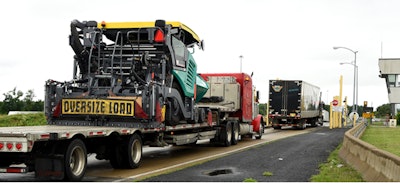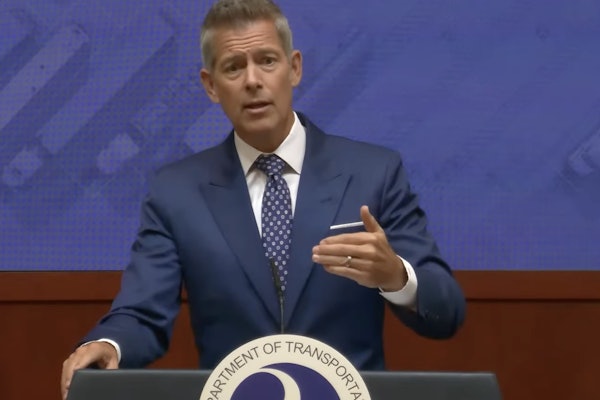
Inspectors in 47 jurisdictions throughout the U.S., Canada, and Mexico conducted 4,898 commercial motor vehicle inspections in one day as part of the Commercial Vehicle Safety Alliance’s brake-safety inspection and enforcement event.
Thirty-seven U.S. jurisdictions participated in this year’s Brake Safety Day with inspectors conducting 3,859 Level I, IV and V Inspections. A total of 448 commercial motor vehicles were placed out of service for brake-related violations, which is an 11.6% vehicle out-of-service rate. Additionally, 74 power units and 46 towed units had brake lining/pad violations.
During this year’s Brake Safety Day data found that of the 4,898 inspections conducted, inspectors identified 570 (11.6%) commercial motor vehicles that were traveling on roadways with brake-related critical inspection item vehicle violations. Those vehicles were immediately restricted from further travel until the critical violations could be properly addressed.
Inspectors identified 330 commercial motor vehicles with 20% brake violations; meaning 20% or more of the vehicle’s (or combination of vehicles) service brakes had an out-of-service condition resulting in a defective brake. That was the top Brake Safety Day violation, accounting for 57.9% of all brake-related out-of-service violations.
Inspectors found other brake violations on 256 (44.9%) of the commercial motor vehicles inspected. Examples of other brake violations include worn brake lines/hoses, broken brake drums, inoperative tractor protection system, inoperative low-air warning device, air leaks, hydraulic fluid leaks, etc.
Seventy-three commercial motor vehicles had steering-related brake violations – 12.8% of all brake-related out-of-service violations.
This year, emphasis was placed on brake lining/pad health and safety. Brake lining/pad issues may result in violations or out-of-service conditions and may affect a motor carrier’s safety rating. Inspectors found 108 power units and 66 towed units with lining/pad violations.
A total of 114 brake lining/pad violations were discovered on power units. The top brake lining/pad violation on power units was for contamination, with 48 violations.
Seventy-one brake lining/pad violations were identified on towed units. Twenty-three of the violations were for cracks/voids in the linings/pads – the top brake lining/pad violation on towed units.
Nine U.S. jurisdictions with performance-based brake testers (PBBT) utilized them during Brake Safety Day. A PBBT is a machine that assesses the braking performance of a vehicle. U.S. Federal Motor Carrier Safety Regulations and CVSA’s North American Standard Out-of-Service Criteria require a minimum braking efficiency of 43.5%. If the vehicle’s braking efficiency is below 43.5%, it’s not providing the minimum stopping power required and needs to be serviced.
Eighty-eight PBBT inspections were conducted on Brake Safety Day. Four (4.5%) failed to meet the 43.5% minimum braking efficiency required and were placed out of service.
Inspectors in nine Canadian provinces and territories conducted 1,021 Level I, IV and V Inspections, and removed 117 commercial motor vehicles from roadways for brake-related out-of-service violations, which is an 11.5% vehicle out-of-service rate. Additionally, 33 power units and 18 towed units had brake lining/pad violations.
Each year, CVSA law enforcement jurisdictions are invited to participate in a one-day unannounced brake-safety inspection and regulatory compliance enforcement event. On that day, CVSA-certified commercial motor vehicle inspectors conduct their routine roadside inspections with a focus on brake systems and components, and provide brake-related inspection and violation data to CVSA.
CVSA’s unannounced Brake Safety Day is part of Operation Airbrake, a CVSA program dedicated to improving commercial motor vehicle brake safety throughout North America. CVSA’s seven-day Brake Safety Week, another Operation Airbrake campaign, is scheduled for Aug. 25-31.












